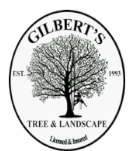Tree Planting and Selection in Colorado Springs, CO
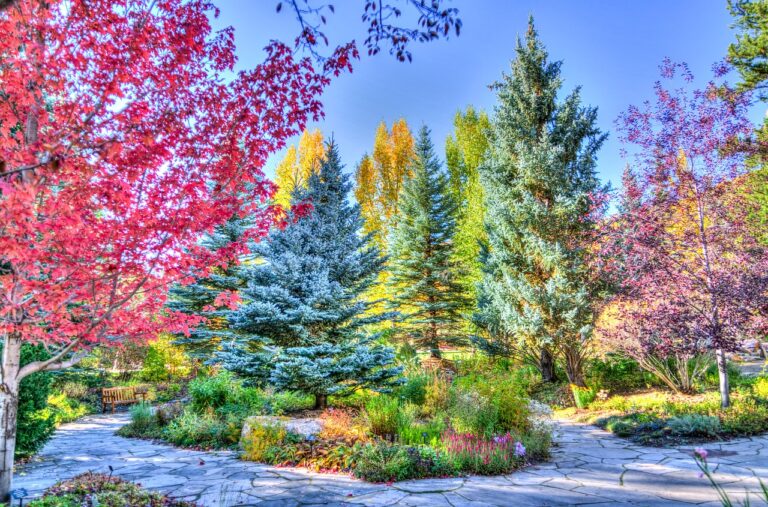
Tree Selection for Lasting Landscapes Choosing the right tree is a pivotal investment for homeowners embarking on landscaping ventures or replacing damaged or diseased trees. Given that most trees outlive their planters, this decision significantly impacts a lifetime. Ensuring a harmonious match between the tree and its environment is paramount. Before purchasing and planting a tree, carefully consider the following site and tree requirements.
Site Considerations:
- Assess available space both above and below ground.
- Evaluate water availability and drainage.
- Consider soil texture, pH levels, sunlight exposure, and prevailing weather conditions.
Tree Considerations:
- Examine the growth rate of the selected species.
- Anticipate the mature size, form, and hardiness.
- Evaluate heat and drought tolerance.
- Check for pest resistance and maintenance issues.
- Weigh the pros and cons of native versus non-native species.
For a landscape that stands the test of time, make informed decisions about vase, full-crowned, columnar, spreading, or globe-shaped trees. Choose wisely with Gilbert’s Tree and Landscape for enduring beauty and resilience.
Popular Trees in Colorado
In Colorado Springs, homeowners have a diverse range of popular trees to choose from, considering the unique climate and landscape of the region. Some of the top choices for homeowners in Colorado Springs include:
Colorado Blue Spruce (Picea pungens): A native tree that thrives in the Colorado climate, the Colorado Blue Spruce is known for its striking blue-gray needles. It provides excellent year-round color and serves well as a focal point in landscaping.
Quaking Aspen (Populus tremuloides): Recognized for its shimmering, heart-shaped leaves that flutter in the wind, the Quaking Aspen is a favorite among Colorado homeowners. It adds a touch of elegance and performs well in the region’s high-altitude conditions.
Ponderosa Pine (Pinus ponderosa): Well-adapted to Colorado’s dry climate, the Ponderosa Pine is a large and hardy tree. It offers ample shade, and its distinctive long needles create a visually appealing landscape.
Chokecherry (Prunus virginiana): A native deciduous tree, the Chokecherry is valued for its clusters of fragrant white flowers in spring and vibrant red berries in late summer. It attracts wildlife and adds a touch of natural beauty to residential landscapes.
Honey Locust (Gleditsia triacanthos): Known for its delicate, fern-like foliage and tolerance to various soil conditions, the Honey Locust is a popular choice in Colorado Springs. Its filtered shade and adaptability make it suitable for urban environments.
Rocky Mountain Juniper (Juniperus scopulorum): Resilient and drought-tolerant, the Rocky Mountain Juniper is well-suited for Colorado’s arid conditions. Its evergreen foliage and distinctive growth habit make it an attractive addition to residential landscapes.
Russian Hawthorn (Crataegus ambigua): This small, ornamental tree is prized for its white flowers in spring and vibrant red berries in the fall. It is well-adapted to Colorado’s climate and adds visual interest to gardens.
When selecting trees for landscaping in Colorado Springs, homeowners should consider factors such as water efficiency, cold hardiness, and resistance to pests. Consulting with local nurseries or arborists can provide valuable insights into choosing the most suitable trees for a thriving and visually appealing landscape in this unique mountainous region.
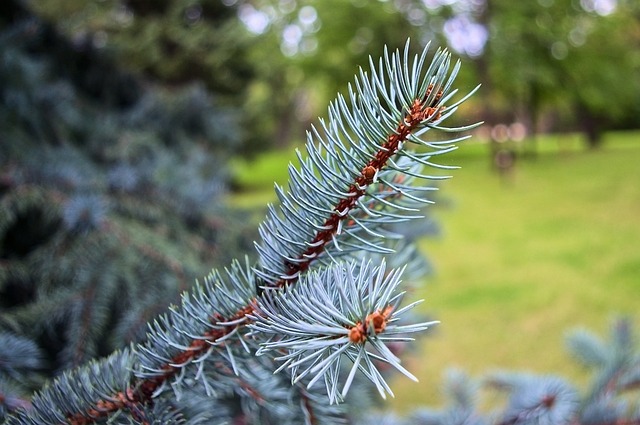
Blue Spruce
The Blue Spruce tree (Picea pungens) is a captivating evergreen known for its striking blue-gray needles and conical shape, native to the Rocky Mountains, particularly in regions like Colorado. Favored in landscaping for its aesthetic charm and adaptability, the spirally arranged blue needles create a visually appealing canopy year-round. Resilient to heavy snow loads, the tree’s conical shape adds elegance to landscapes, making it popular in both residential and public spaces. Producing small cylindrical cones in spring, and with bark transforming as it matures, the Blue Spruce is adaptable to various soil conditions, making it a resilient and attractive choice. Beyond its landscaping appeal, the tree symbolizes strength and endurance, becoming an iconic representation of natural beauty in North America.
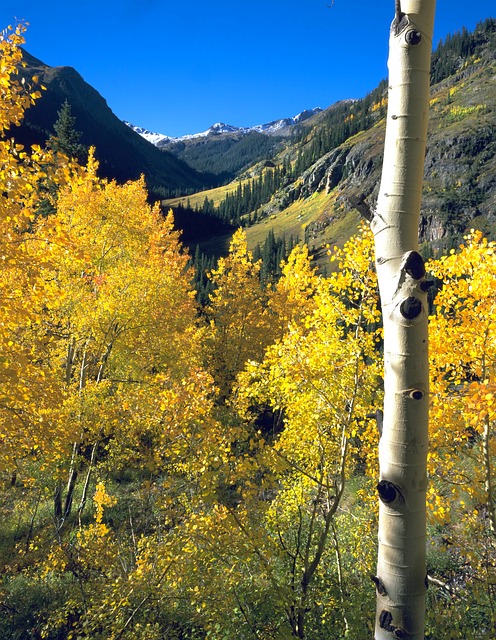
Aspen Tree
The Aspen tree (Populus tremuloides) is an iconic deciduous tree known for its distinctive white bark and quaking leaves. Found in regions like Colorado, the Aspen’s leaves tremble with the slightest breeze, creating a visually striking effect. These trees play a vital role in supporting local ecosystems, providing habitat for wildlife. Growing in large stands connected by shared root systems, Aspen groves exhibit resilience and longevity. During fall, their heart-shaped leaves turn a brilliant golden yellow, attracting visitors to witness the breathtaking autumn landscapes. Beyond their visual appeal, Aspens hold cultural and historical significance, symbolizing protection and endurance in Native American traditions. With its unique features and ecological importance, the Aspen tree stands as an enduring symbol of natural beauty in North America.
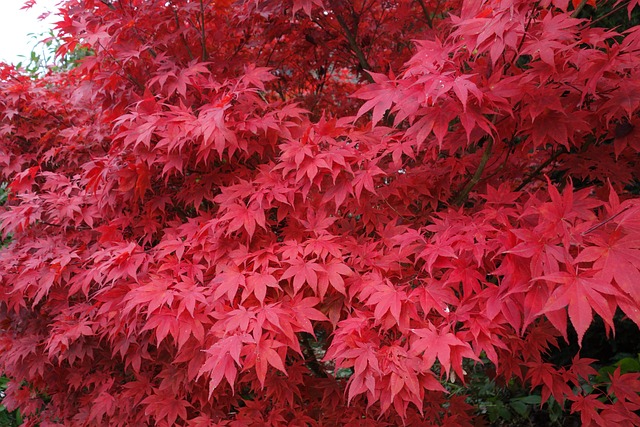
Red Maple
The Red Maple tree (Acer rubrum) brings vibrant splashes of color to the Colorado landscape, adding a touch of elegance with its striking red hues. While not as native to Colorado as some other species, the Red Maple adapts well to the state’s diverse climates. In the fall, its green leaves transform into brilliant shades of red, creating a captivating display that enhances the autumn scenery. This deciduous tree thrives in various soil types, making it suitable for Colorado’s terrain. Beyond its aesthetic appeal, the Red Maple provides valuable ecosystem services, offering habitat for wildlife and contributing to the overall biodiversity of the region. Whether standing as a singular ornamental specimen or incorporated into diverse landscapes, the Red Maple stands out as a symbol of beauty and adaptability in the Colorado environment.
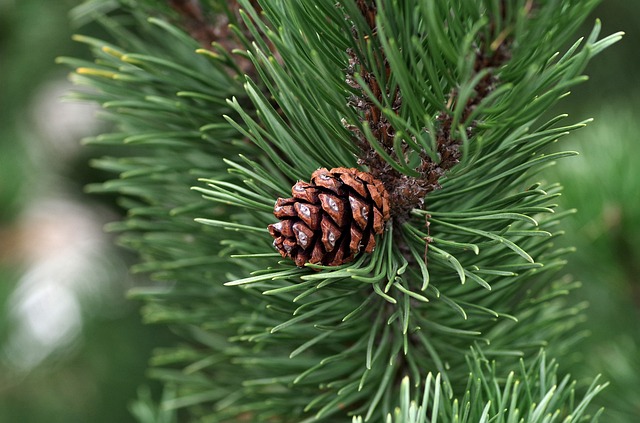
Ponderosa Pine Tree
Unveiling the Beauty of Ponderosa Pine: Immerse your landscape in the majesty of Ponderosa Pine, a stunning evergreen tree known for its iconic presence and versatility. As a sought-after choice in landscaping, the Ponderosa Pine (Pinus ponderosa) stands tall with its distinctive tall trunk and long, slender needles. This resilient tree thrives in a variety of soil conditions, making it an ideal choice for diverse landscapes. Whether as a single specimen or part of a larger grove, the Ponderosa Pine brings timeless elegance to your surroundings. Explore the unique features and benefits of this magnificent tree, and let its enduring beauty elevate your outdoor space. For expert guidance on integrating Ponderosa Pines into your landscape, trust Gilbert’s Tree & Landscape, your premier partner in sustainable tree solutions. Click to bring the beauty of Ponderosa Pine to your doorstep.
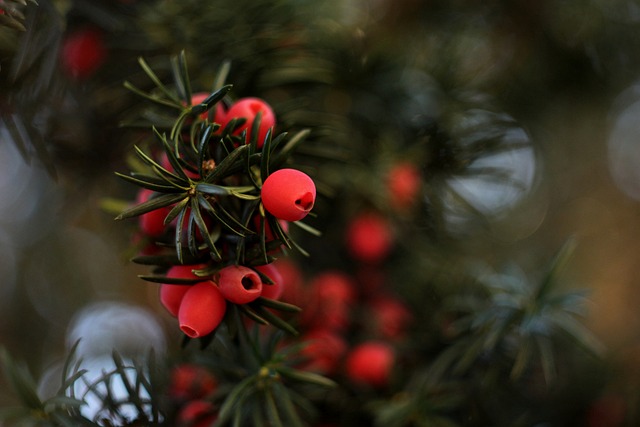
Chokecherry Tree
Embrace Nature’s Beauty with Chokecherry Trees: Elevate your landscape with the enchanting charm of Chokecherry trees. Prized for their fragrant white flowers and vibrant red berries, these native deciduous trees add a burst of color to your outdoor haven. Ideal for a variety of soil types, Chokecherry trees (Prunus virginiana) thrive in diverse climates, making them a perfect choice for landscaping projects. Their significance extends beyond aesthetics, attracting wildlife and contributing to biodiversity. Explore the unique features and benefits of Chokecherry trees with Gilbert’s Tree & Landscape, your trusted partner in tree care and landscaping. Click now to infuse your surroundings with the timeless allure of Chokecherry trees and create a picturesque outdoor retreat.
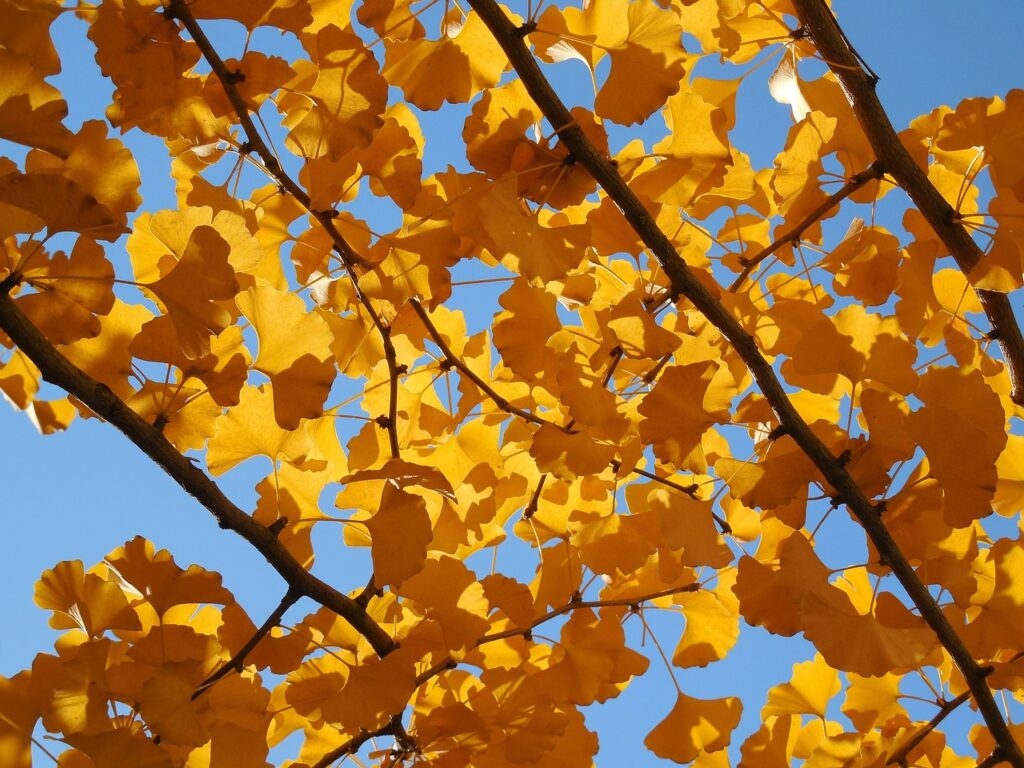
Ginkgo (Ginkgo biloba)
Ginkgo (Ginkgo biloba) is one of the oldest living tree species. It stands out with its resilience to insect and disease issues, boasting beautiful fall foliage and distinctive leaf shapes.
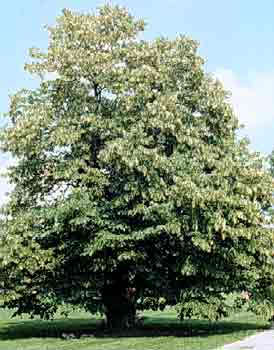
American Linden
The American linden, a native tree with a centuries-old legacy, is prized for its fibrous inner bark and fragrant flowers. Featuring unique blooms and large, heart-shaped leaves, it adds a stately presence as a single specimen or in clumps, requiring careful maintenance to prevent the formation of multiple small trees. Adaptable to full sun, rich soil, and various conditions, it tolerates clay, wide pH ranges, and partial shade. Despite challenges like susceptibility to Japanese beetles and storm damage, this tree has been cultivated in North America since 1752, attracting bees for honey production. Linden wood, valued for carving, has historical significance, with the Iroquois tribe crafting ceremonial masks. The Kentucky champion tree, standing at 110 feet, exemplifies the linden’s majesty. Recognized for providing fiber, edible leaves, and versatile wood, the linden remains a symbol of enduring beauty and utility, making it ideal for parks and expansive landscapes. The genus name, Tilia, rooted in Latin, underscores its botanical legacy. Native from Canada to Alabama and westward, the American linden stands as a testament to nature’s timeless allure.
Norway Maple
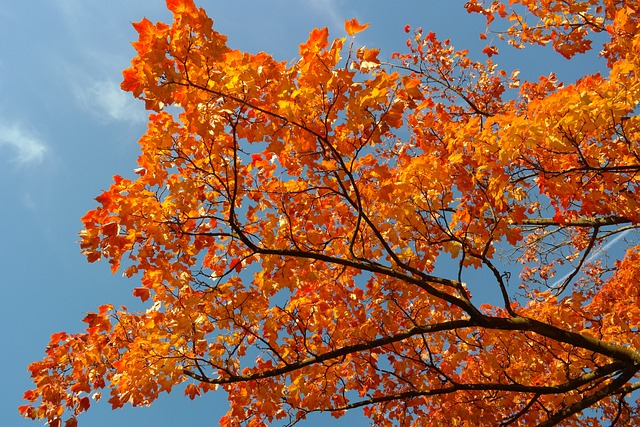
Norway maple (Acer platanoides) is known for its shapely form, varied leaf colors, and the need for protection from sun scald. Sugar maple (Acer saccharum) thrives in lower pH soils, showcasing glossy dark green leaves that transform into vibrant reds, oranges, and yellows in the fall. Sycamore (Platanus occidentalis) is a fast-growing, long-lived tree with distinctive mottled bark, while Horsechestnut (Aesculus hippocastanum) charms with greenish-yellow flowers, prickly seed pods, and vivid fall colors. Among the medium shade trees, Littleleaf linden (Tilia cordata) stands out with yellow flower clusters, pea-sized fruit, and a formal pyramidal form, making it an excellent choice for urban landscapes.
No Longer Recommended Trees in Colorado

Black walnut (Juglans nigra) offers edible nuts, making it a favorite among squirrels and birds, but may create a messy environment. Black walnut or butternut – formerly a good choice, now endangered by walnut twig beetle carrying the fungus that causes Thousand Cankers disease of walnut. These trees are no longer recommended for planting in the Denver area.
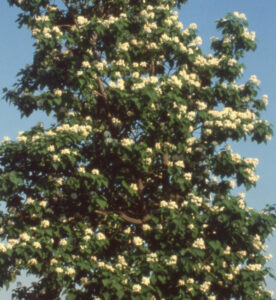
Northern catalpa (Catalpa speciosa) captures attention with fragrant white flowers, pencil-sized seedpods, and large heart-shaped leaves.
However, it is an invasive, weedy dtree which escapes cultivation easily. The flowers, long seedpods and seeds fall down from spring through winter, and create a mess on the ground anywhere near the tree.
